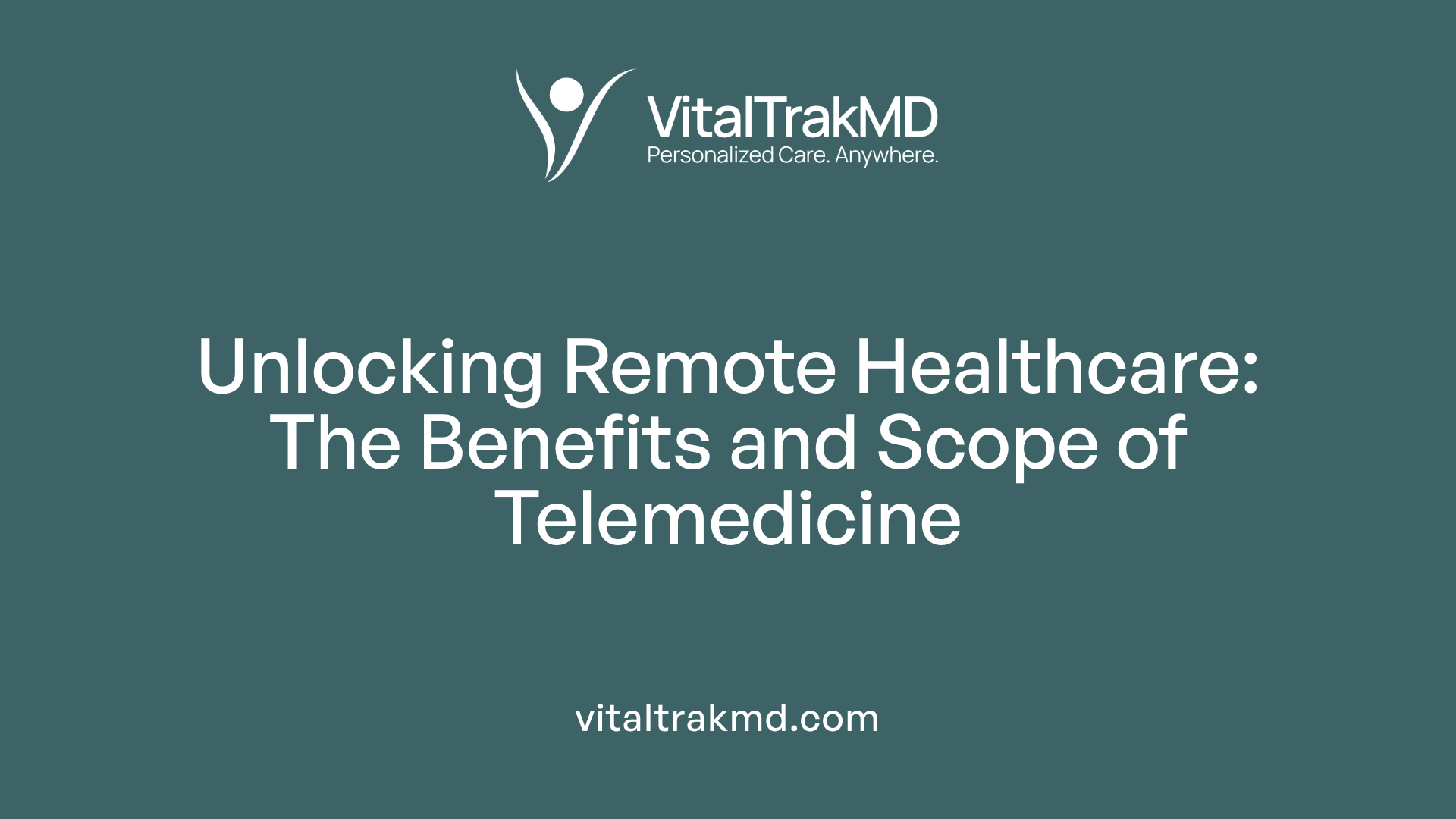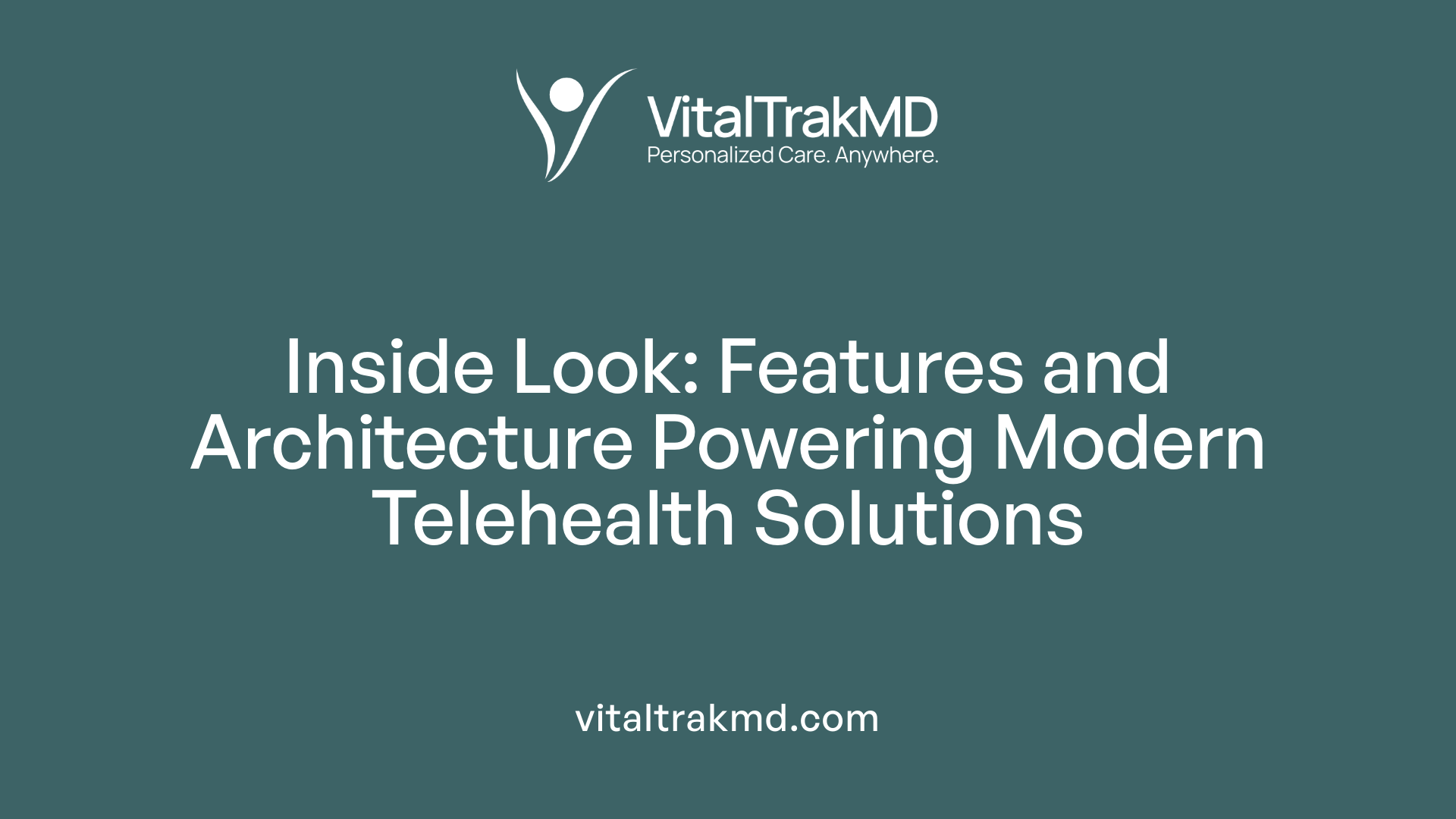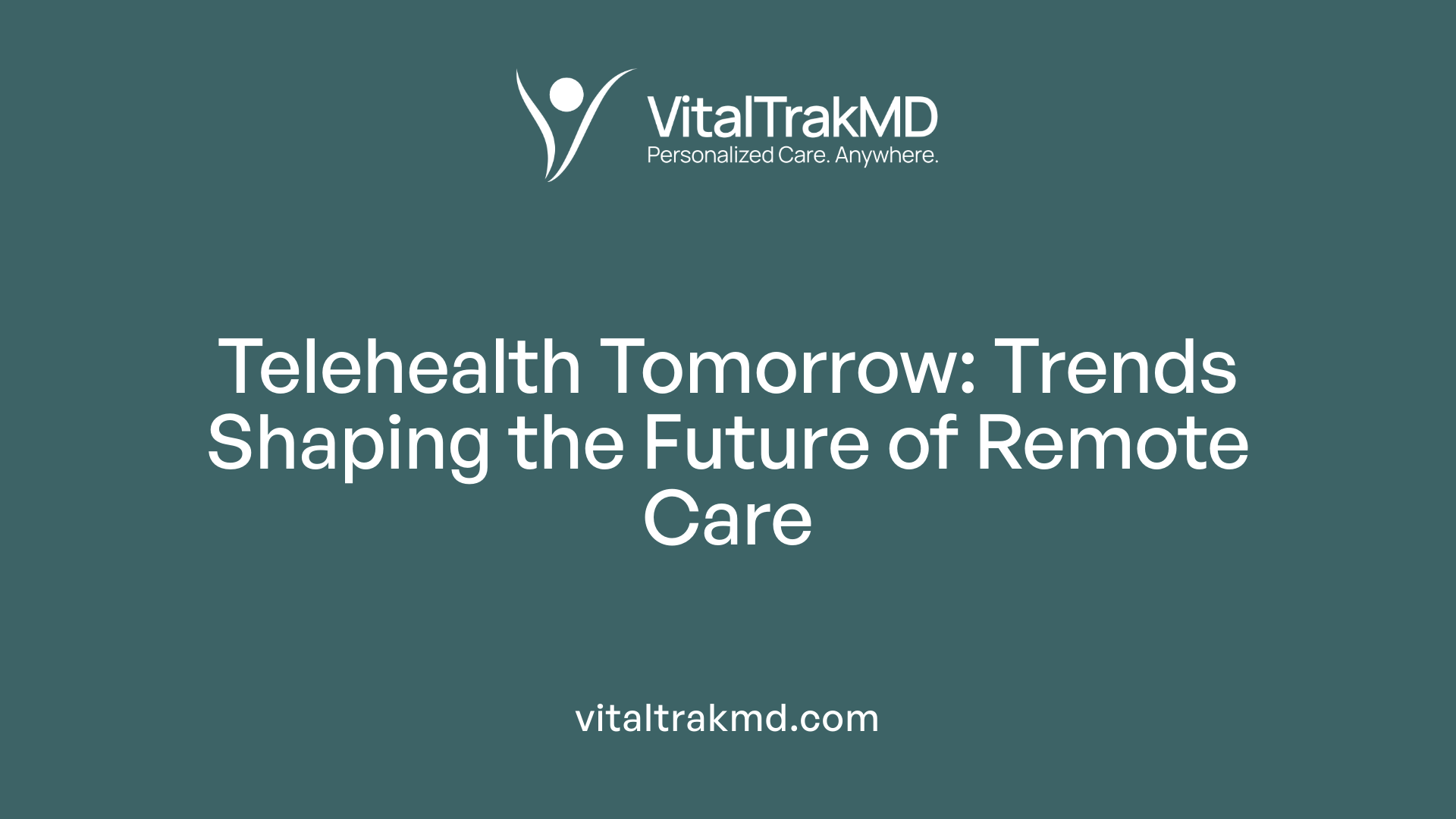VitalTrak vs Standalone Telemedicine Apps

Understanding the Landscape of Telemedicine Solutions
The rapidly evolving field of telehealth offers a wide range of platforms designed to enhance healthcare delivery outside traditional settings. Among these, VitalTrak and standalone telemedicine apps represent two prominent approaches, each with its own strengths and features. This article explores the distinctions, advantages, and considerations involved in selecting the most suitable telehealth solution for diverse healthcare needs.
Overview of Telehealth and Telemedicine

What are the general benefits of telemedicine for patients and healthcare providers?
Telemedicine offers significant advantages for both patients and healthcare providers. For patients, especially those living in rural or underserved regions, it improves access to medical care by enabling virtual contact with healthcare professionals without the need for travel. This convenience reduces wait times and the stress associated with in-person visits. During health crises such as pandemics, telemedicine minimizes exposure to infectious diseases by limiting physical interactions.
Patients can also benefit from better management of chronic conditions through remote monitoring and regular virtual check-ins. Family members can be involved in care discussions even if they are remote, promoting a more holistic approach.
Healthcare providers gain efficiencies through streamlined workflows, reduced costs, and the ability to reach more patients, including those requiring specialized mental health or niche services. Telemedicine also enhances patient engagement and satisfaction, leading to more continuous and timely treatments.
Overall, telemedicine supports more flexible, efficient, and patient-centered healthcare delivery while also promoting safety and resource optimization.
What is telemedicine, and how does it differ from telehealth?
Telemedicine is the practice of delivering clinical healthcare services remotely, such as conducting virtual visits, diagnostics, and ongoing patient monitoring. It involves licensed medical professionals providing direct patient care via digital channels.
Conversely, telehealth encompasses a broader scope of remote health-related activities. It includes not only clinical services but also non-clinical functions such as health education, provider training, administrative meetings, and public health initiatives. Telehealth utilizes a variety of technologies including videoconferencing, mobile health apps, remote monitoring devices, and store-and-forward imaging.
While telemedicine is primarily focused on direct patient care, telehealth covers additional aspects aimed at improving healthcare access and education across various fronts. Essentially, telemedicine is a subset within the wider field of telehealth.
What are the main types of telehealth services, and what functionalities do they include?
The main categories of telehealth services include:
| Type | Description | Typical Functionalities |
|---|---|---|
| Live Video Conferencing | Real-time, interactive consultations | Video calls, shared screens, co-browsing, direct communication |
| Asynchronous or Store-and-Forward | Non-real-time data sharing for review | Medical images, lab results, patient histories sent for later analysis |
| Remote Patient Monitoring (RPM) | Continuous tracking of health data | Devices like blood pressure cuffs, glucometers transmitting data electronically |
| Mobile Health (mHealth) | Mobile applications and wearable tech | Health tracking apps, medication reminders, symptom reporting |
These services collectively expand healthcare access, facilitate better management of chronic conditions, and enable remote diagnostics and patient engagement.
What should be considered when choosing between VitalTrak and other telemedicine applications for healthcare needs?
Choosing between VitalTrak and other telemedicine platforms involves several factors.
First, evaluate clinical feature compatibility—does the software support the specific services needed? Check if it seamlessly integrates with your existing Electronic Health Record (EHR) systems for efficient data sharing.
Device compatibility is crucial; ensure the platform works across various devices and operating systems (web, iOS, Android) to serve all users effectively. Regulatory compliance like HIPAA is necessary to safeguard patient data. Security features such as end-to-end encryption provide additional assurance.
Cost considerations include initial setup, ongoing subscription fees, and scalability options to accommodate future growth.
User experience matters: a simple, intuitive interface for both providers and patients enhances engagement and reduces training needs. Features like virtual waiting rooms, secure messaging, appointment scheduling, customizable branding, and consistent technical support can lead to better adoption and satisfaction.
In sum, the choice should align with clinical needs, security standards, user-friendliness, and financial feasibility, ensuring the platform supports quality patient care efficiently.
Core Features and Technical Architecture of Telehealth Platforms

Typical Features Offered by Telehealth Platforms
Modern telehealth platforms are equipped with a variety of features designed to facilitate seamless remote healthcare delivery. Top platforms generally include secure, HIPAA-compliant video consultations, which allow patients and providers to connect in real-time. Integration with electronic health records (EHR) ensures that patient data is readily accessible during virtual visits, improving accuracy and continuity of care.
Remote patient monitoring (RPM) is a critical component, enabling providers to track physiological parameters such as blood pressure, glucose levels, or oxygen saturation through FDA-cleared devices. Secure messaging systems foster ongoing communication outside scheduled appointments, while virtual waiting rooms streamline patient flow and engagement.
Many platforms offer customizable branding options, support multi-device access, and feature user-friendly interfaces. Specific functionalities like wound imaging, medication management, or AI-based diagnostics are also available, often tailored for particular medical specialties.
VitalTrak exemplifies these capabilities by providing a secure, HIPAA-compliant environment for virtual visits, integrating with existing EHR systems, and supporting remote monitoring with Bluetooth-enabled devices. Its focus on customization and ease of integration aligns well with current industry standards for telehealth excellence.
Integration with Medical Devices and Electronic Health Records
Effective telehealth solutions must seamlessly connect with medical devices and EHR systems to ensure comprehensive patient monitoring and record-keeping. Devices such as blood pressure cuffs, glucometers, and pulse oximeters transmit data electronically, which can be integrated into the platform to provide real-time insights.
VitalTrak is designed to connect with FDA-approved medical devices, transmitting data directly to healthcare providers. It seamlessly integrates with popular EHR platforms, including Epic, facilitating synchronized documentation and reducing manual data entry. This interoperability enhances clinical decision-making and supports ongoing care management.
Furthermore, platforms often include features like image capture and sharing, essential for specialties such as dermatology or wound care. This integration ensures that providers can review diagnostic images within the platform, making remote assessments more efficient.
Technical Architecture and Security Considerations
The backbone of a robust telehealth system relies on a secure, scalable architecture. Typically, platforms employ cloud-based servers to facilitate data storage, video streaming, and app functionalities. Modules are designed for various user types, including patient apps, provider portals, and administrative dashboards.
Security considerations are paramount, especially in handling sensitive health data. Platforms like VitalTrak use end-to-end encryption, secure data storage, and regular security audits to ensure compliance with HIPAA and other health privacy regulations.
Workflow automation tools support scheduling, billing, and reporting, streamlining operational efficiency. Additionally, multi-factor authentication and role-based access controls prevent unauthorized access.
Customizability and Scalability of Telehealth Solutions
The versatility of telehealth platforms is enhanced by their ability to be customized according to institutional needs. Whether adding specific diagnostic tools, customizing interfaces, or integrating with various medical devices, platforms like VitalTrak can adapt to different healthcare settings.
Scalability is also vital, especially for large healthcare networks or rural clinics. Cloud-based architecture enables platforms to expand effortlessly, supporting increased user loads and new functionalities without significant infrastructure changes.
Overview of Features in Leading Telehealth Platforms
| Feature | Description | Typical Usage |
|---|---|---|
| Secure Video Consultations | Real-time virtual visits with encryption | Routine checkups, mental health therapy |
| EHR Integration | Synchronize patient data across systems | Clinical documentation, care planning |
| Remote Monitoring Devices | Collect and transmit health data remotely | Chronic disease management, post-operative care |
| Secure Messaging | Asynchronous communication with providers | Follow-up questions, medication queries |
| Imaging & Diagnostics | Share images or lab results in the platform | Dermatology consultations, wound assessments |
| Custom Branding | Healthcare organizations can brand interfaces | Enhances patient trust and experience |
| Multi-device Compatibility | Access via smartphones, tablets, desktops | Flexibility for users across devices |
| Workflow Automation | Scheduling, billing, data analysis features | Operational efficiency, compliance |
Examples of Telehealth Systems
| Platform Name | Main Focus | Integration Capabilities | Notable Features |
|---|---|---|---|
| VitalTrak | Comprehensive remote monitoring and virtual visits | EHR systems, FDA-cleared devices | Customization, AI diagnostics, multi-device support |
| Epic EMR | Integrated health records with telemedicine options | Epic systems, imaging software | Image sharing, virtual consults, built-in workflows |
| Teladoc | Broad telehealth services including urgent care | Multiple third-party integrations | Large provider network, specialty services |
| Amwell | Specialty-specific telehealth services | EHRs, medical devices integration | Extensive telehealth reach, partnership opportunities |
VitalTrak shares many features with these leading platforms, especially in terms of telehealth delivery, EHR integration, and remote patient monitoring, making it a competitive choice for healthcare providers aiming for comprehensive virtual care solutions.
Market Trends and Future Outlook

How does VitalTrak compare with other telehealth solutions in terms of functionalities and market presence?
VitalTrak provides comprehensive telehealth solutions that are well-integrated with existing healthcare systems, especially emphasizing functionalities suitable for care providers. Its platform facilitates remote monitoring, care management, and seamless data flow, making it a strong choice for clinics aiming to enhance patient engagement.
Compared to leading telehealth providers such as Teladoc, Amwell, and MDLive—which offer a wide range of services including urgent care, mental health visits, and specialty consultations—VitalTrak tends to focus more narrowly on remote monitoring and chronic disease management.
The global telehealth industry is experiencing rapid growth, valued at over $247 billion in 2024. Experts project this figure to soar to nearly $1.05 trillion by 2034, fueled by increased digital adoption, especially during the COVID-19 pandemic.
Major players like Teladoc and Amwell boast extensive provider networks and diversified service offerings, helping them establish a broad market presence. VitalTrak’s strength lies in its tailored functionalities that integrate well within existing workflows and promote efficient care delivery.
While VitalTrak is a more specialized platform, its position in the expanding telehealth ecosystem makes it a competitive option for providers looking for targeted, high-quality remote monitoring solutions within a landscape dominated by larger, more diversified platforms.
What emerging trends in telehealth are likely to influence platforms like VitalTrak and standalone apps?
The future of telehealth is being reshaped by several innovative trends. Artificial intelligence (AI) is increasingly integrated into telehealth platforms for diagnostics, predictive analytics, and personalized care plans, enhancing decision-making.
Remote patient monitoring is evolving rapidly with the advent of advanced wearable devices that continuously collect health data such as blood pressure, glucose levels, and oxygen saturation. These devices transmit data directly to healthcare providers, enabling more proactive management of chronic conditions.
Interoperability between different health information systems is becoming a priority, allowing platforms like VitalTrak to work smoothly alongside other electronic health records (EHRs), labs, and imaging systems.
The deployment of 5G connectivity promises to improve real-time data sharing and high-quality video capabilities, making virtual encounters more natural and effective.
Emerging technologies like virtual reality (VR) and augmented reality (AR) are beginning to find clinical applications, especially in areas like surgical planning and physical therapy.
Cloud-based solutions are gaining popularity due to their scalability, security, and adaptability, enabling platforms to cater to larger populations and new service types.
These trends collectively foster an environment where telehealth platforms will become more intelligent, interactive, and tailored to individual patient needs, pushing the envelope of remote healthcare delivery.
| Aspect | Trends | Impact on Platforms like VitalTrak | Examples |
|---|---|---|---|
| Technology Integration | AI, VR, AR | Personalization, enhanced diagnostics, immersive therapies | Use of AI-driven analytics for patient data |
| Connectivity | 5G | Faster, more reliable virtual visits | Improved video quality and real-time data sharing |
| Monitoring Devices | Wearables, home sensors | Continuous health monitoring, early detection | Smart blood pressure cuffs, glucose monitors |
| System Interoperability | Data sharing standards | Seamless integration with EHRs and other systems | HL7, FHIR standards adoption |
This wave of technological advancement will continue to shape telehealth’s evolution, making platforms like VitalTrak more sophisticated, user-friendly, and capable of delivering higher-quality care remotely.
Making an Informed Choice in Telehealth Deployment
Selecting the optimal telehealth platform depends on understanding the unique requirements of your healthcare organization. While standalone telemedicine apps excel in straightforward virtual consultations, integrated solutions like VitalTrak provide robust features for comprehensive care management, remote monitoring, and seamless integration with existing systems. As the telehealth industry continues its trajectory of growth fueled by technological innovation and global health challenges, healthcare providers must evaluate functionalities, security, scalability, and overall fit to ensure they choose a platform that supports both current needs and future expansion. By understanding the core differences and strategic advantages of VitalTrak versus standalone apps, organizations can better navigate their digital transformation journey, ultimately enhancing patient outcomes and operational efficiency.
References
- Telehealth Basics - ATA
- Telemedicine platforms and their use in the coronavirus disease-19 ...
- Benefits of Telemedicine | Johns Hopkins Medicine
- Telehealth Vs Telemedicine Vs MHealth, And How RPM Fits In
- Getting started with telehealth
- Telemedicine Apps for Rural Areas: Features, Architecture, Costs
- Benefits of Telemedicine | Johns Hopkins Medicine
- Telemedicine for healthcare: Capabilities, features, barriers, and ...
- Telehealth Benefits and Barriers - PMC - PubMed Central
- Why use telehealth?
Recent articles
Want to Feel Better and Live Healthier?
Join hundreds of patients taking control of their health with personalized care that fits their life – not the other way around.
Rated 4.8/5 by 32+ customers







